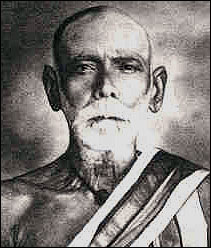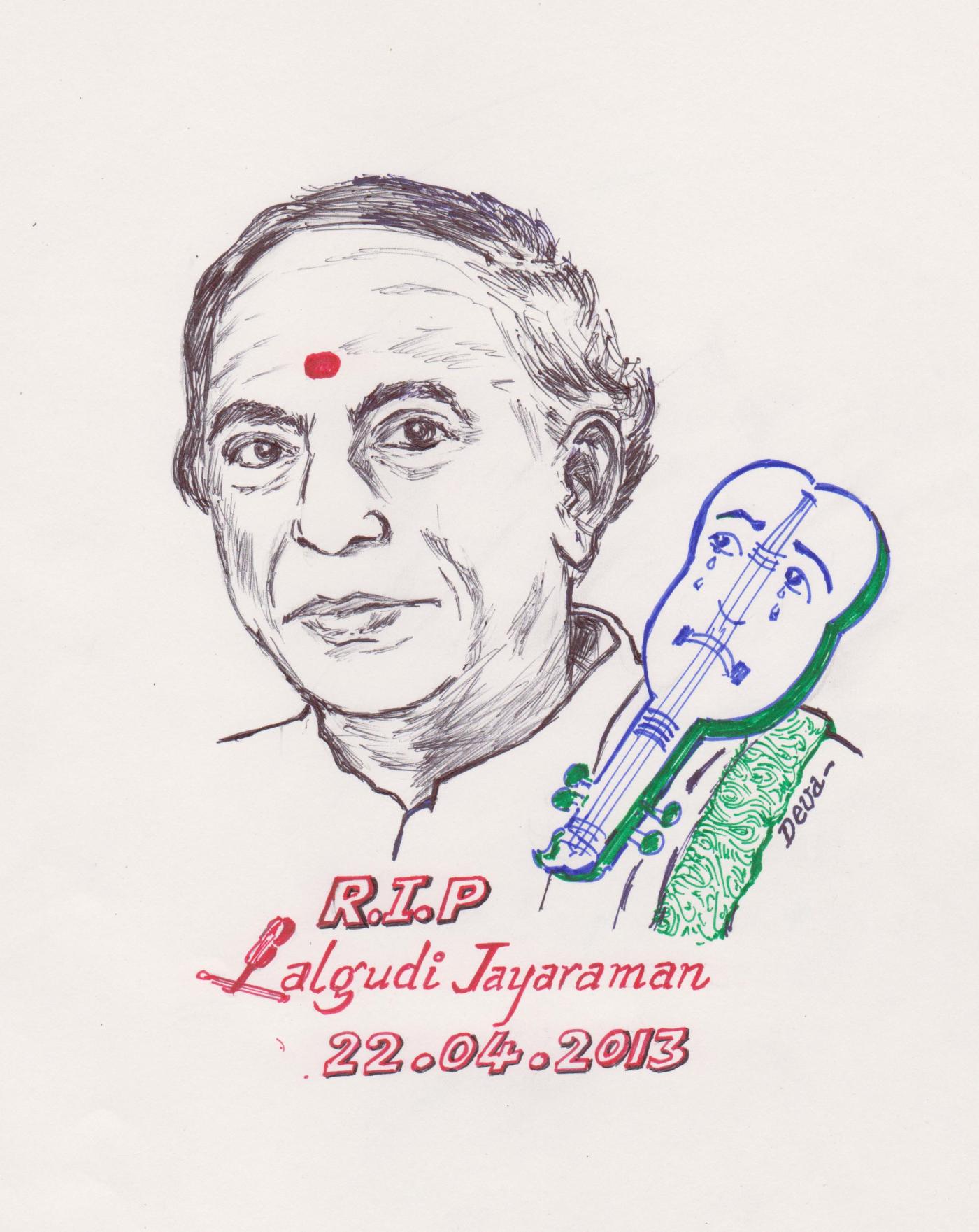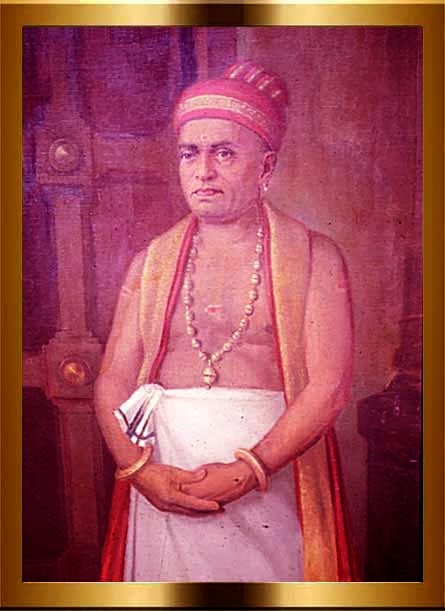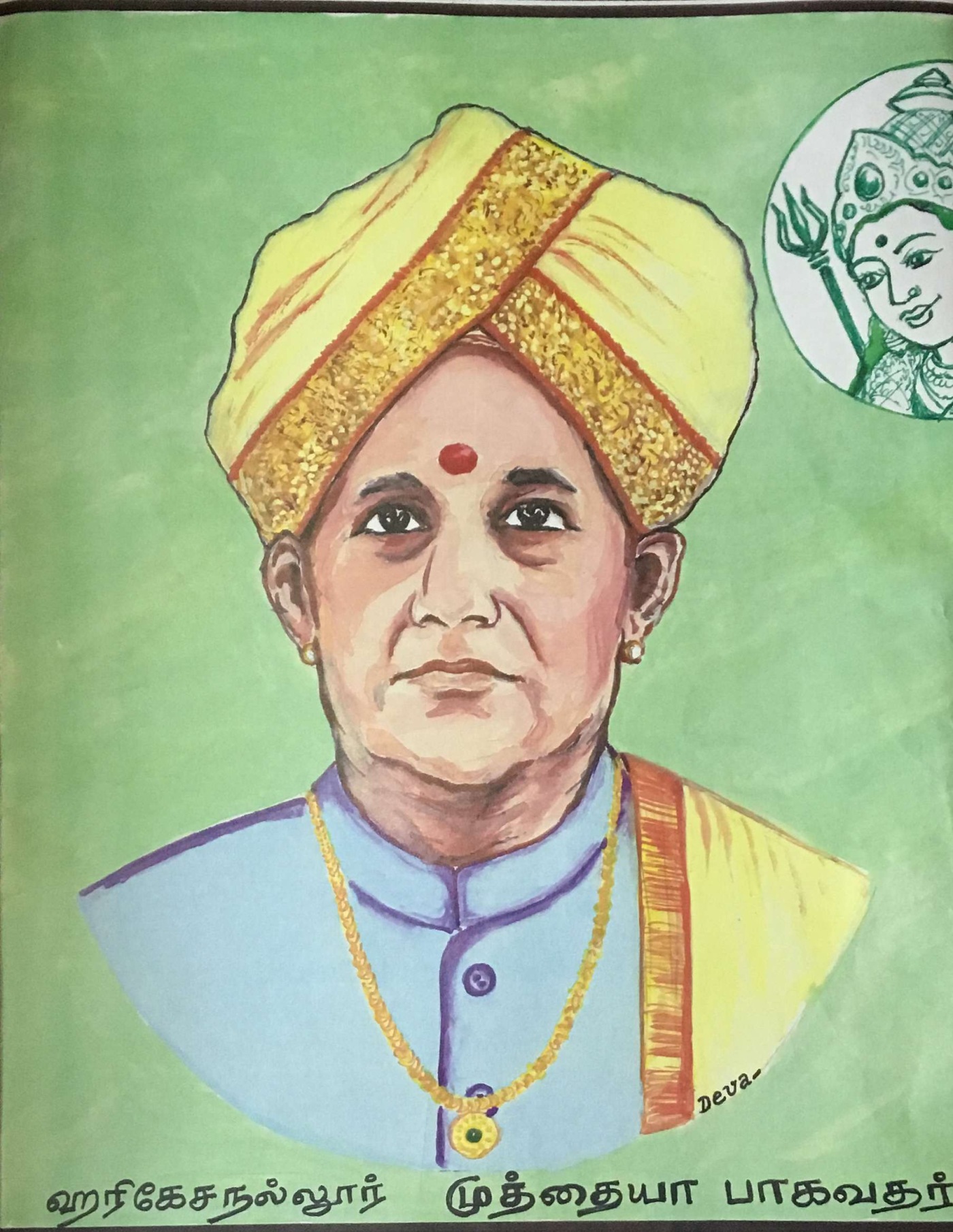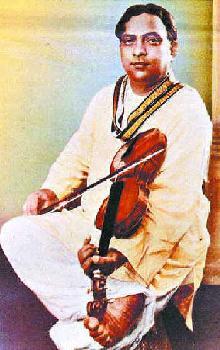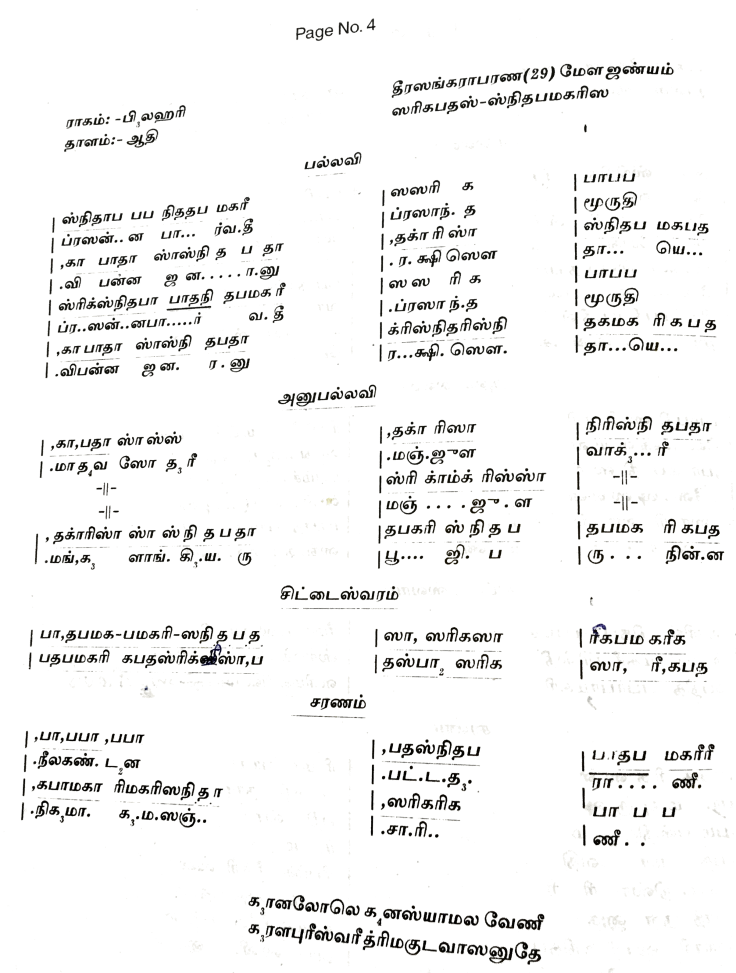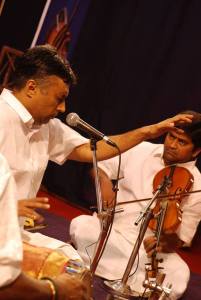Kuntalavarali is a light raga – in carnatic music, one could classify a ragam that does not involve much gamakam in its grammer as light. I would even call it breezy. It is sung mostly with Madhyamam as base sruthi. A child raga of Harikamboji, it has a zigzag scale thus.
Aarohanam – S M1 P D2 N2 D2 S
Avarohanam – S N2 D2 P M1 S
Carnatic Compositions
- Sankadame Jagam, Patiyil Pasuvinilave by Lakshmanan Pillai (I know the first song, but the second one is merely mentioned in an essay on the composer; there are no recordings I know of to corroborate it)
- Kandavarkku Kanavilum by Swarna Venkatesa Dikshitar
- Ninnupogada Tharama by GNB
- Sara Sara Samarai by Thyagaraja
- Bogindra Shayinam by Swati Thirunal
- Thillana by Balamurali Krishna
- Shivaya Namavendru by Papanasam Sivan
- Antharyami by Annamacharya – set to tune by Pinakapani
Listen to Kandavarkku Kanavilum in Kuntalavarali ragam, a composition of Swarna Venkatesa Dikshitar.
Use In Movies
If I have to talk about movie songs in this ragam, I have to talk about this song in the malayalam movie, Manichithrathazh – Oru Murai Vandhu Paarthaaya. The tamizh portion of the song is a beautiful Kuntalavarali.
Other movie songs in this ragam are:
- Raja Vaada Singa Kutti from Thisai Maariya Paravaigal (by MSV)
- Maname Nee Eesan from Ashok Kumar (the movie, not actor), music by Papanasam Sivan
Until next,
Vid 🙂
